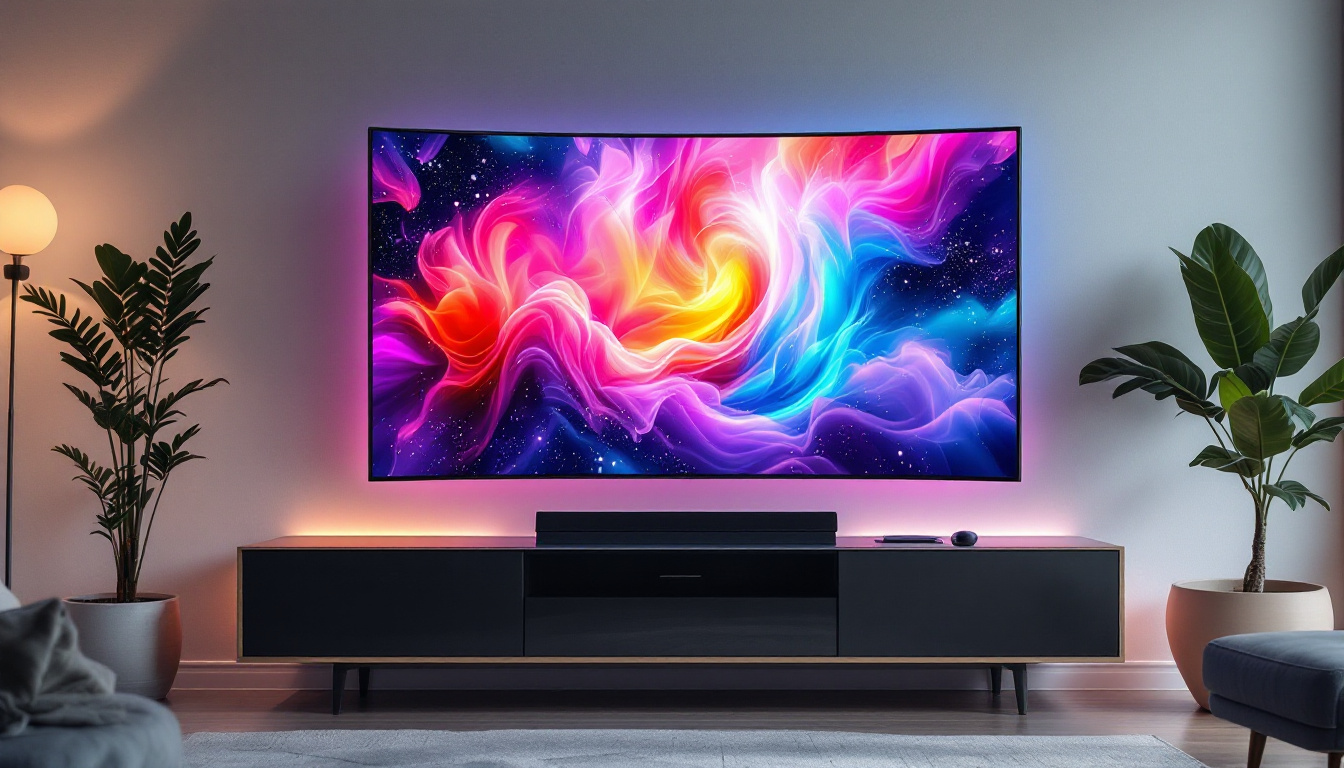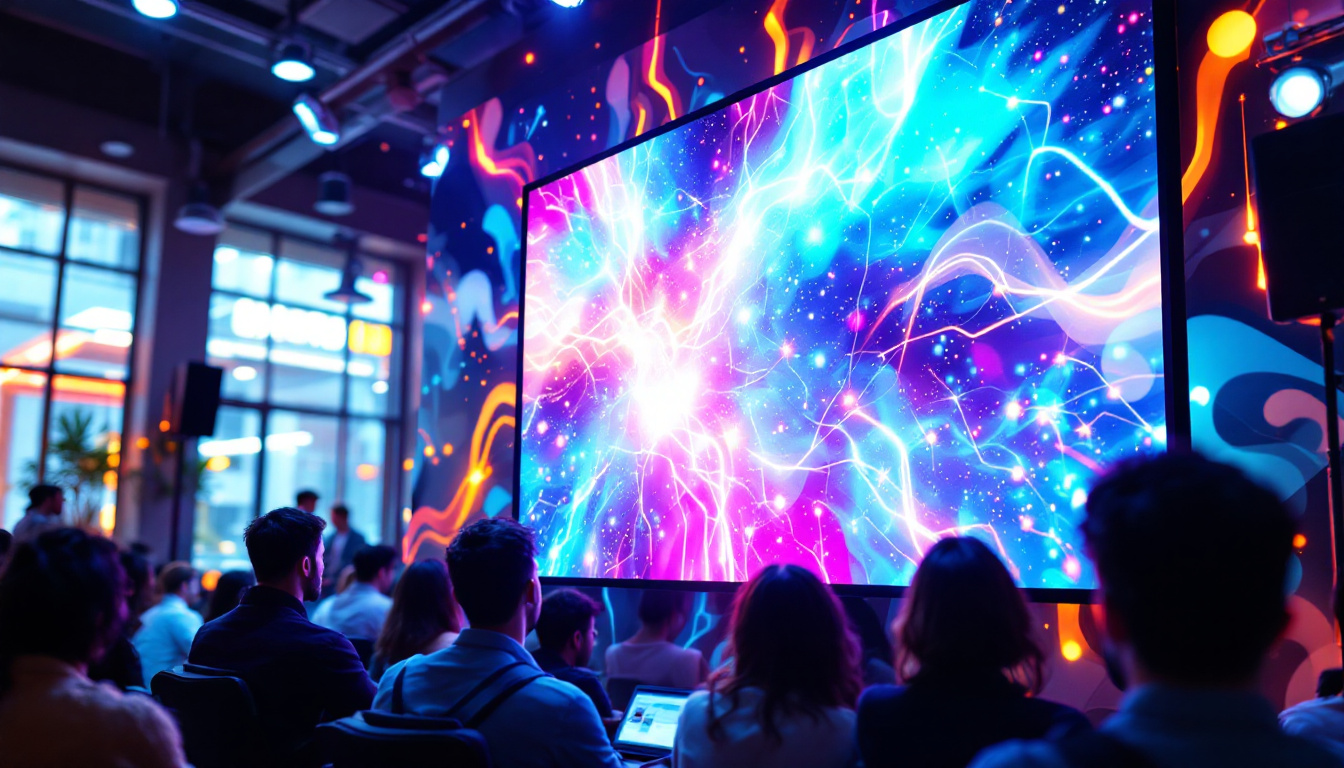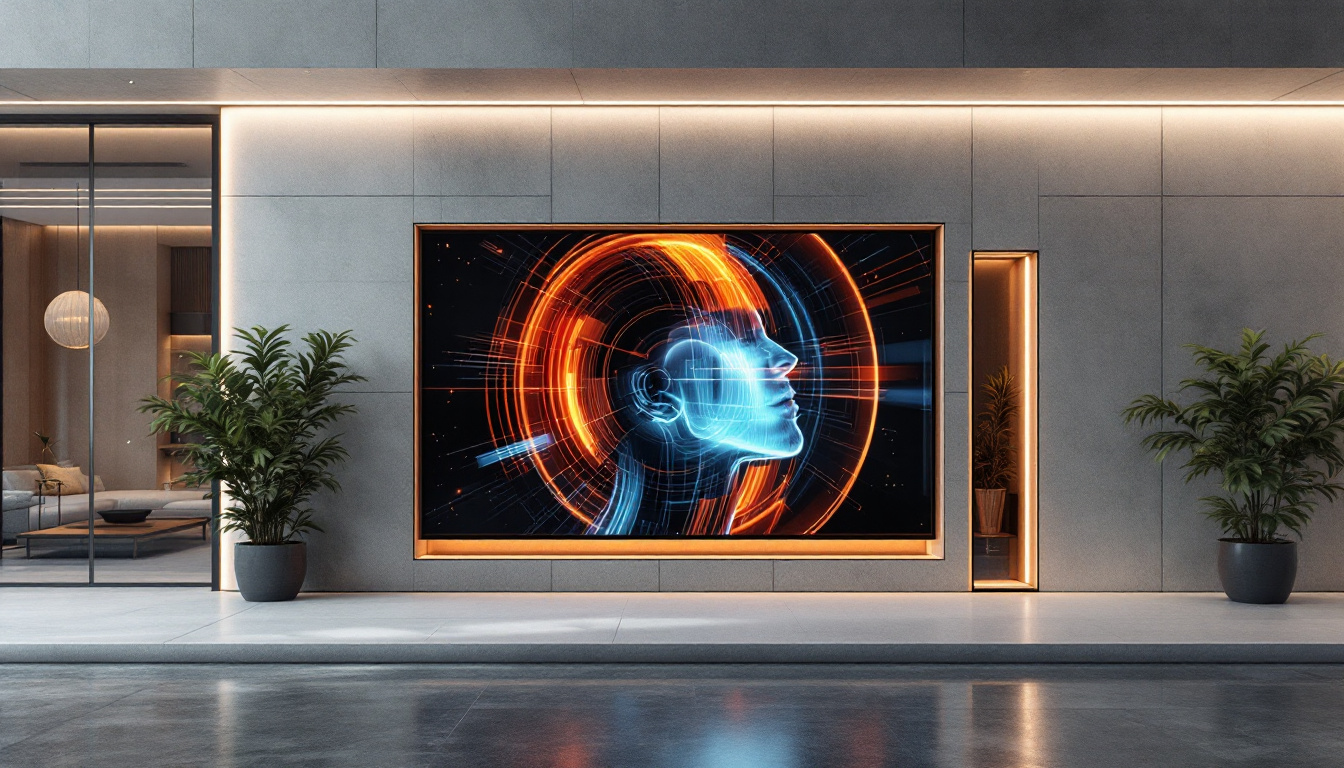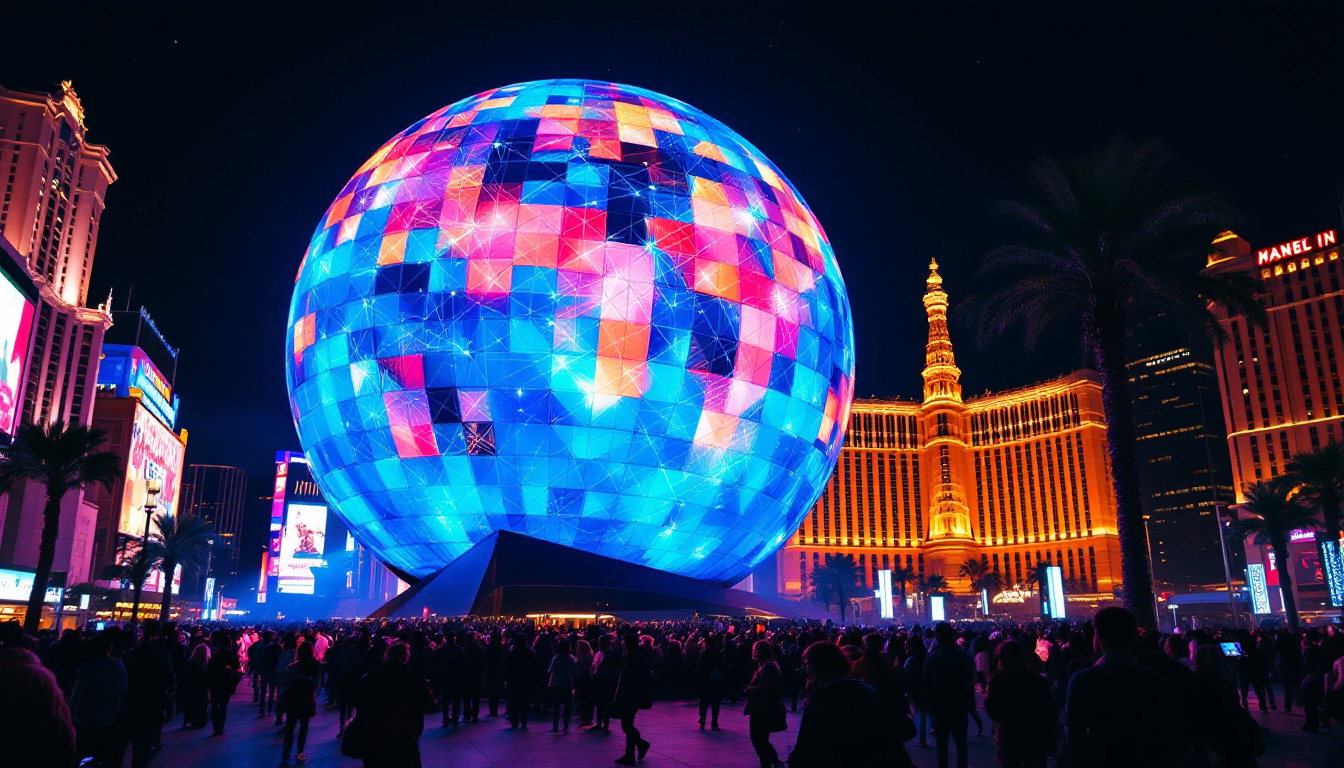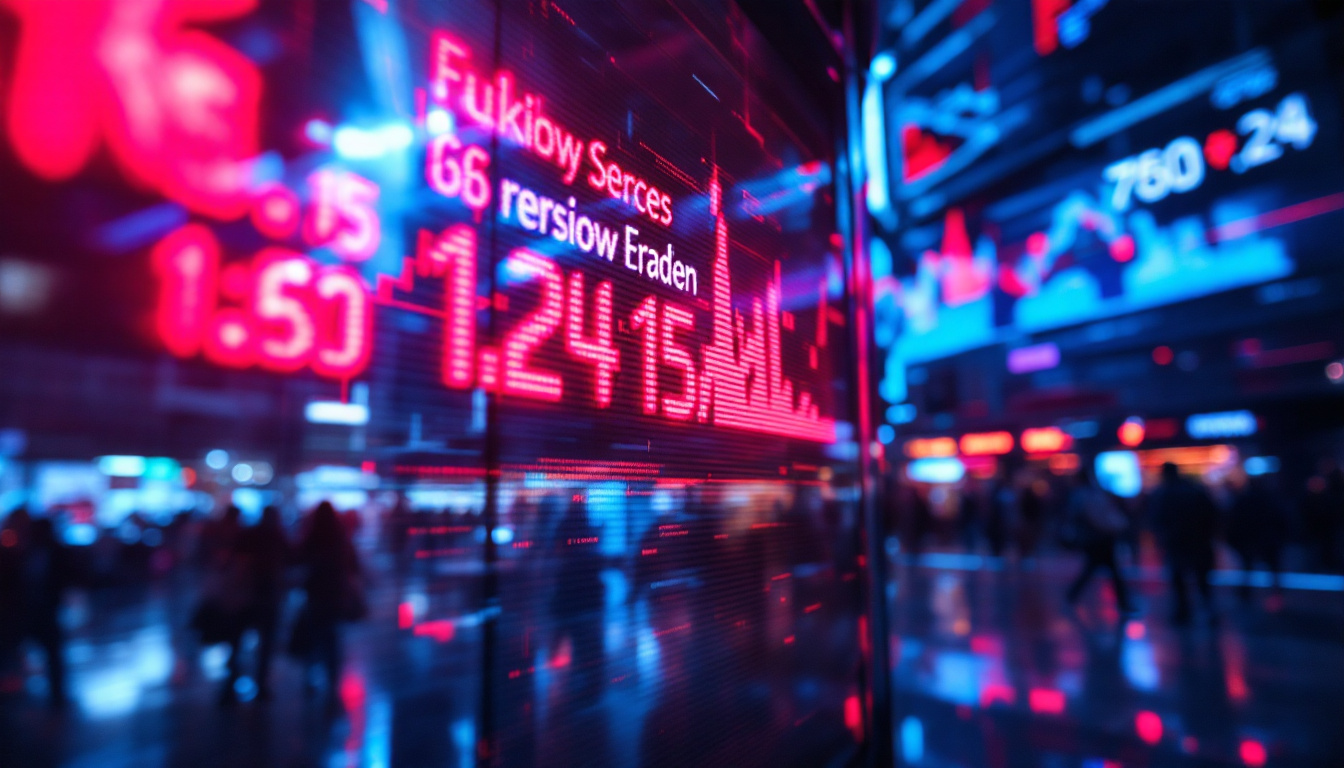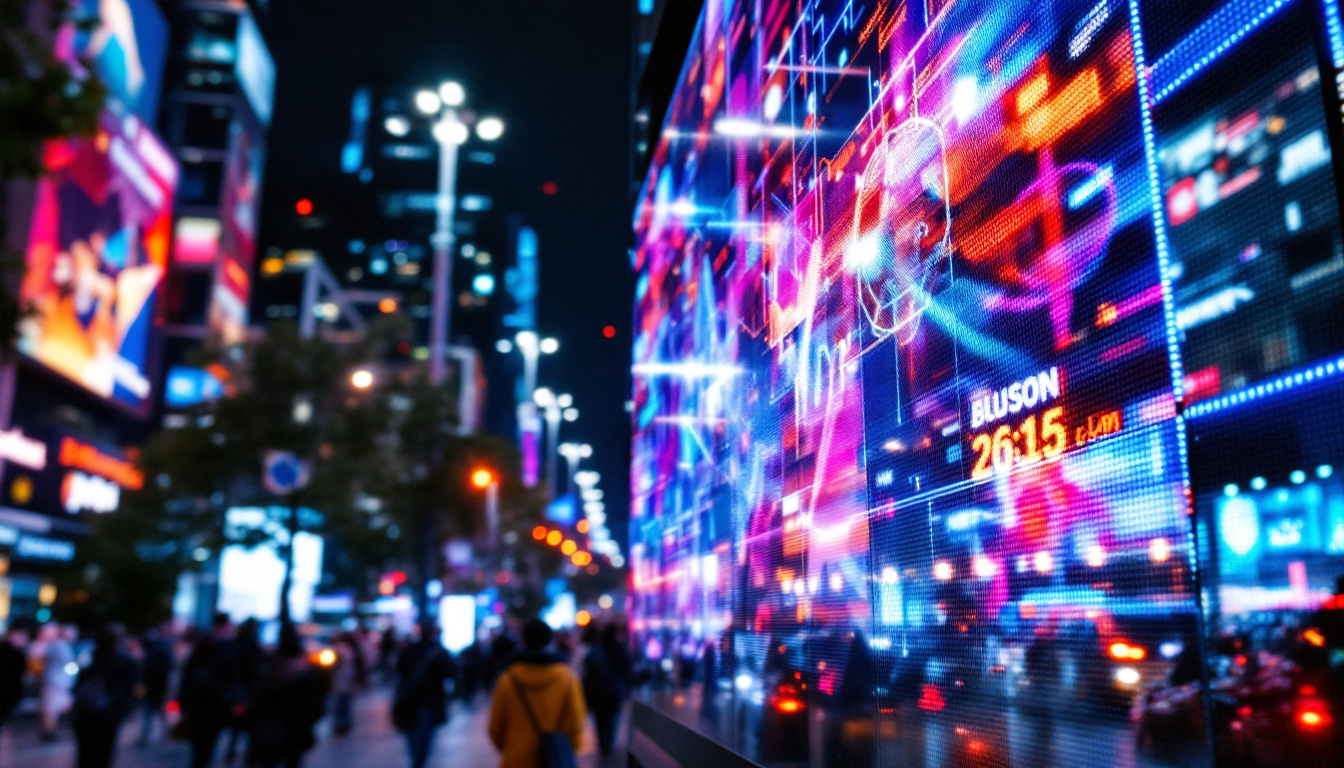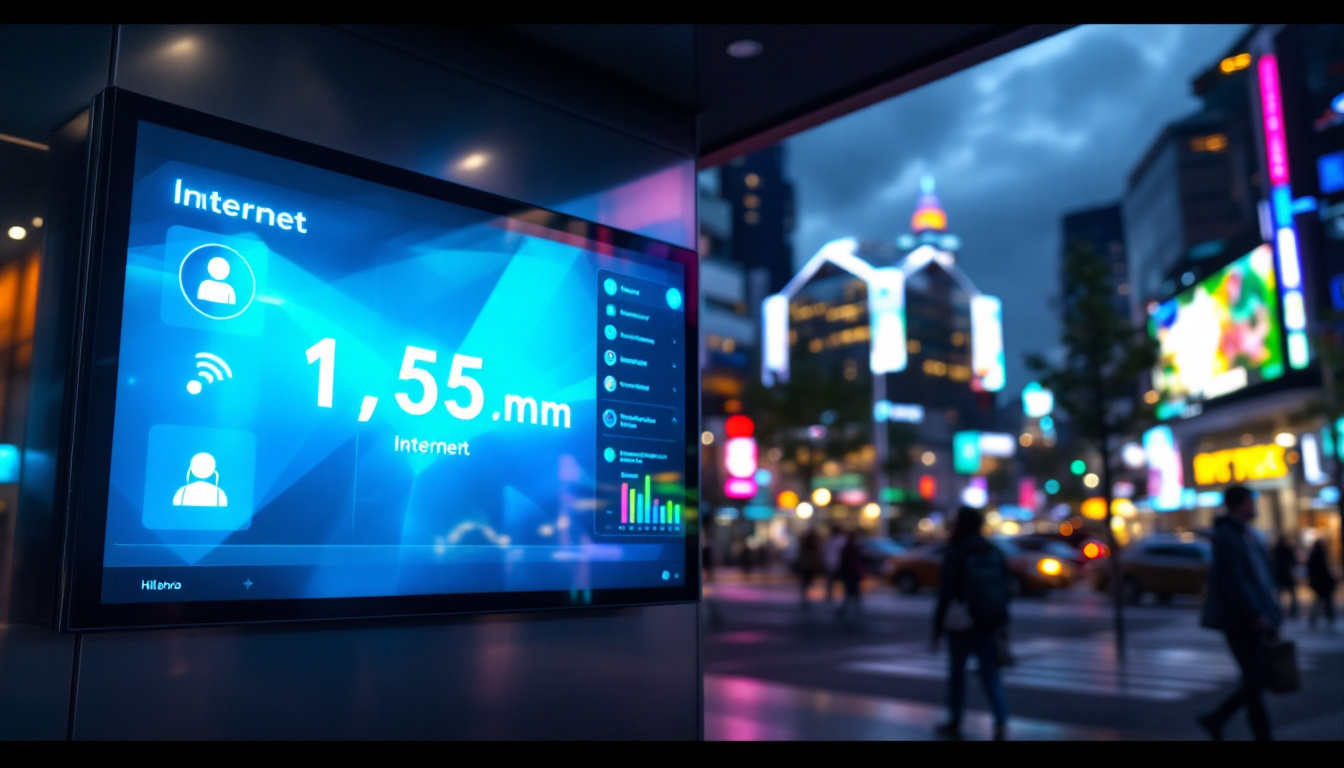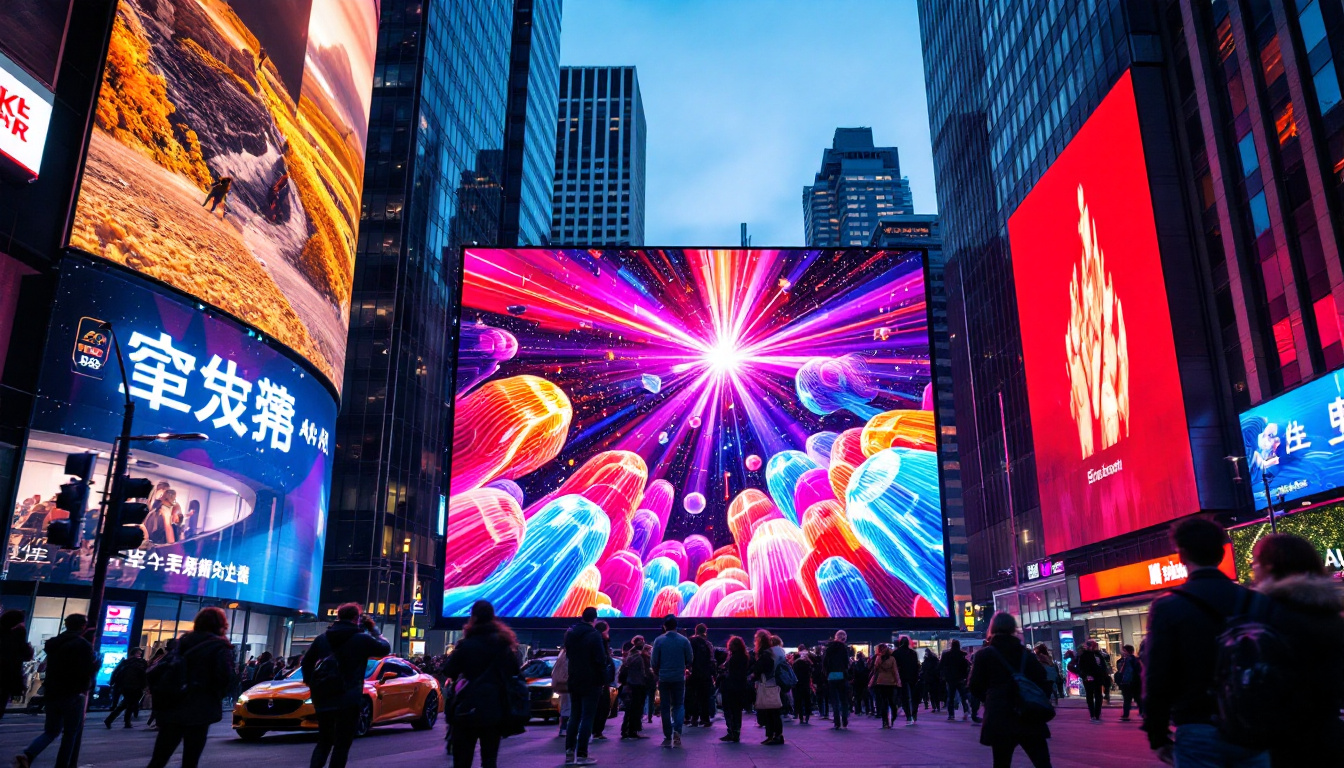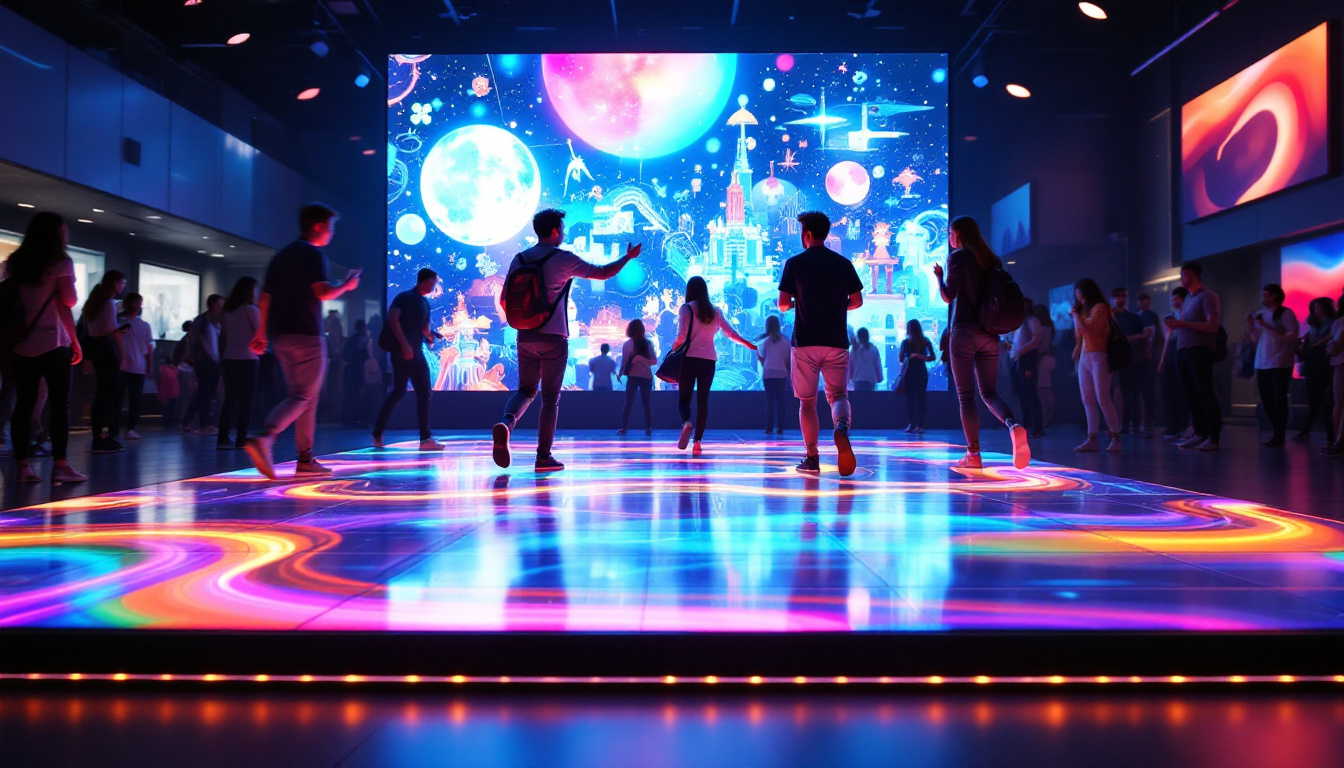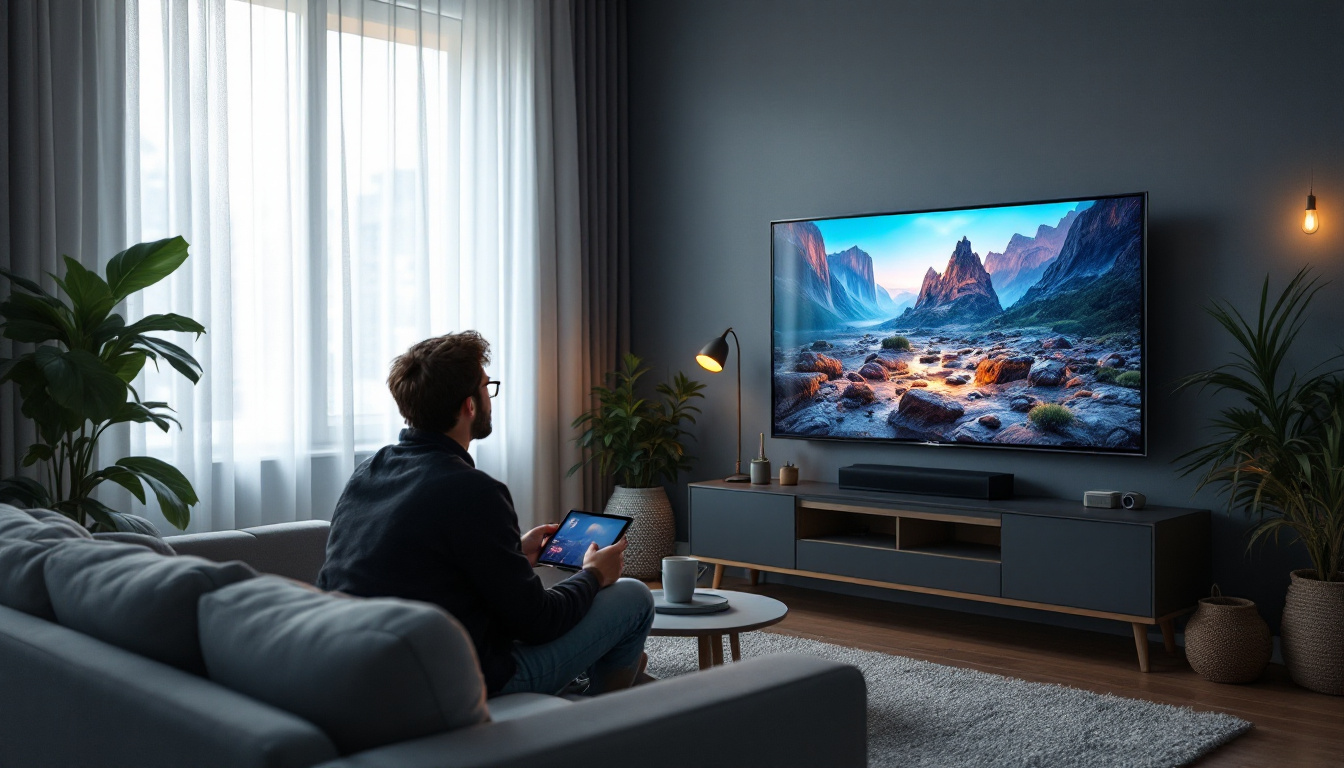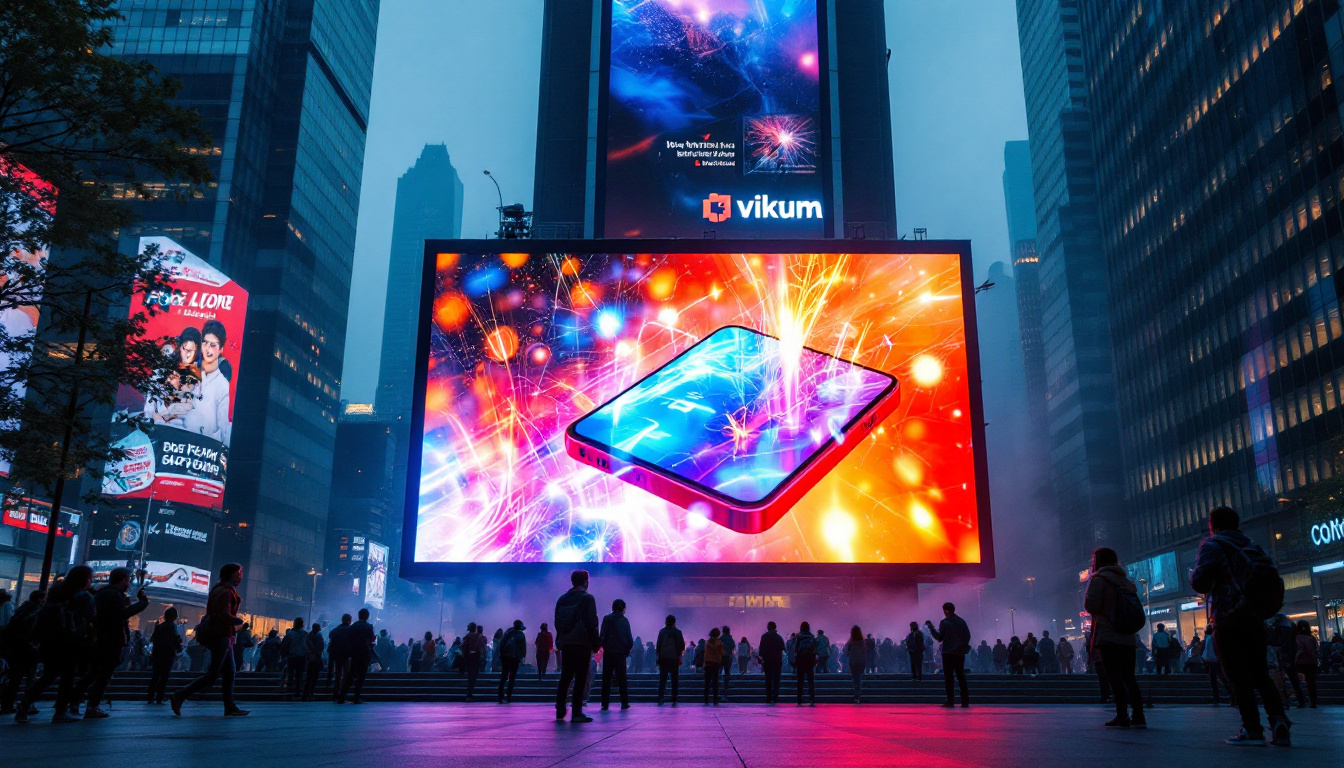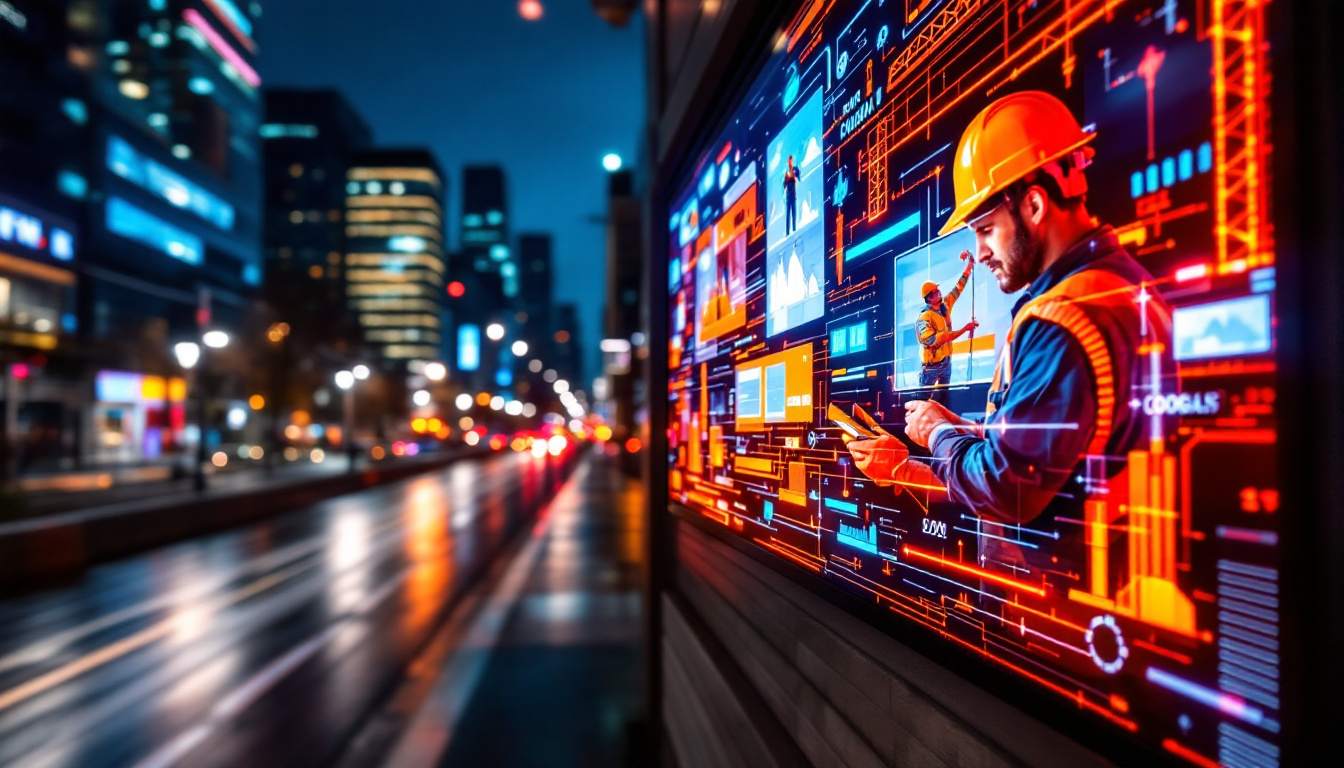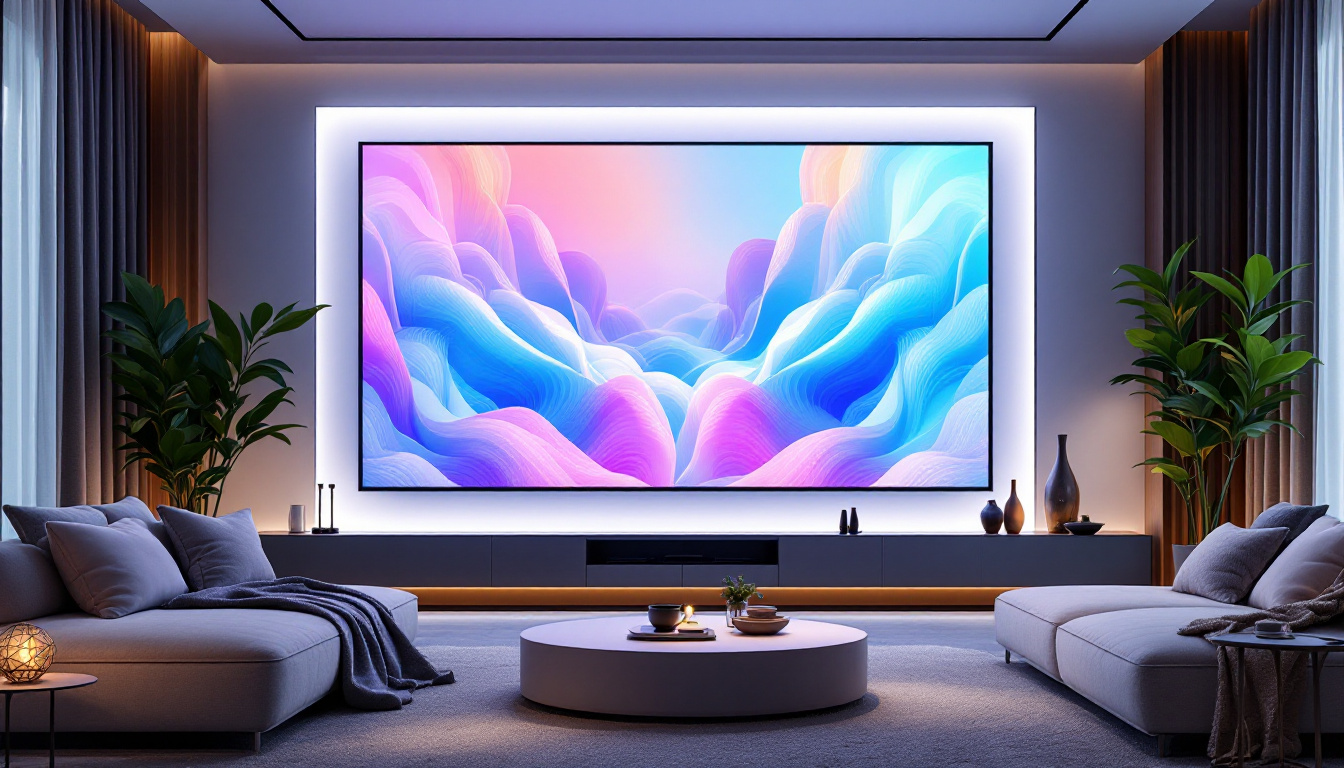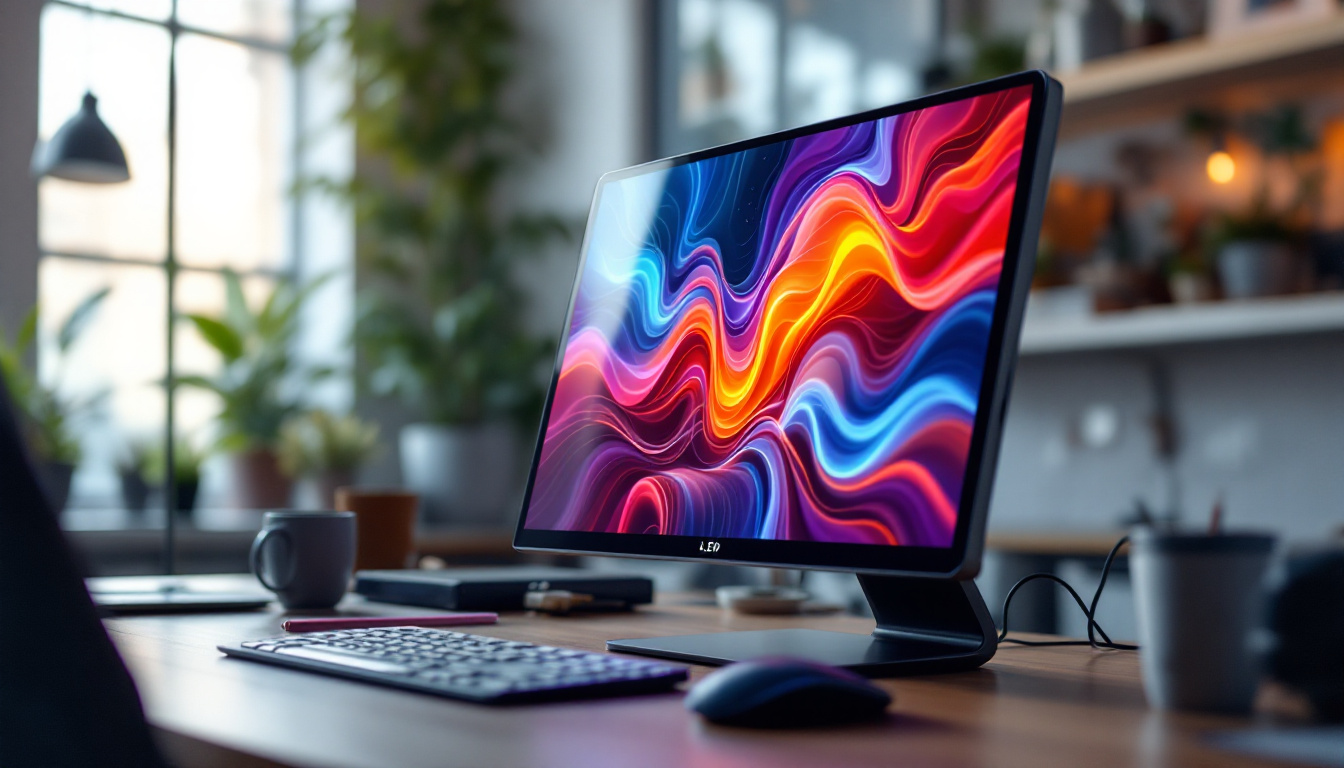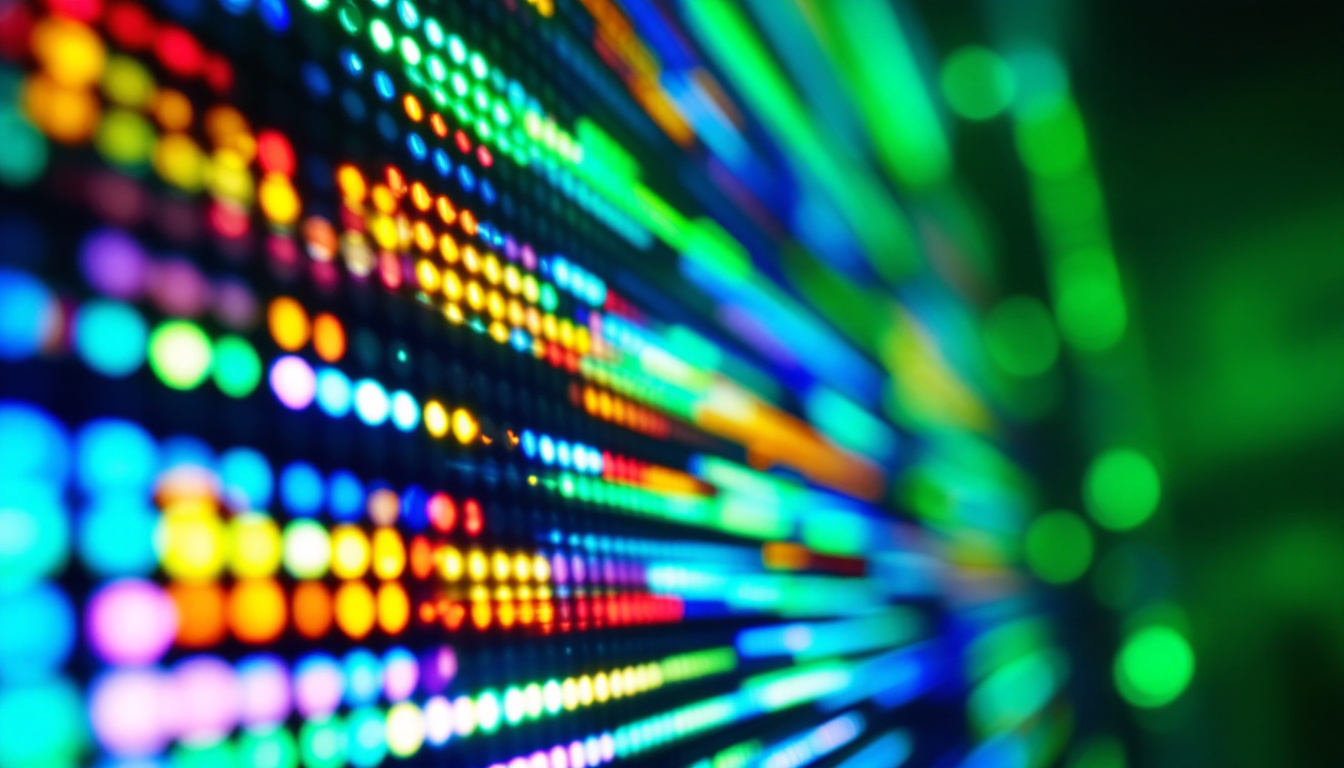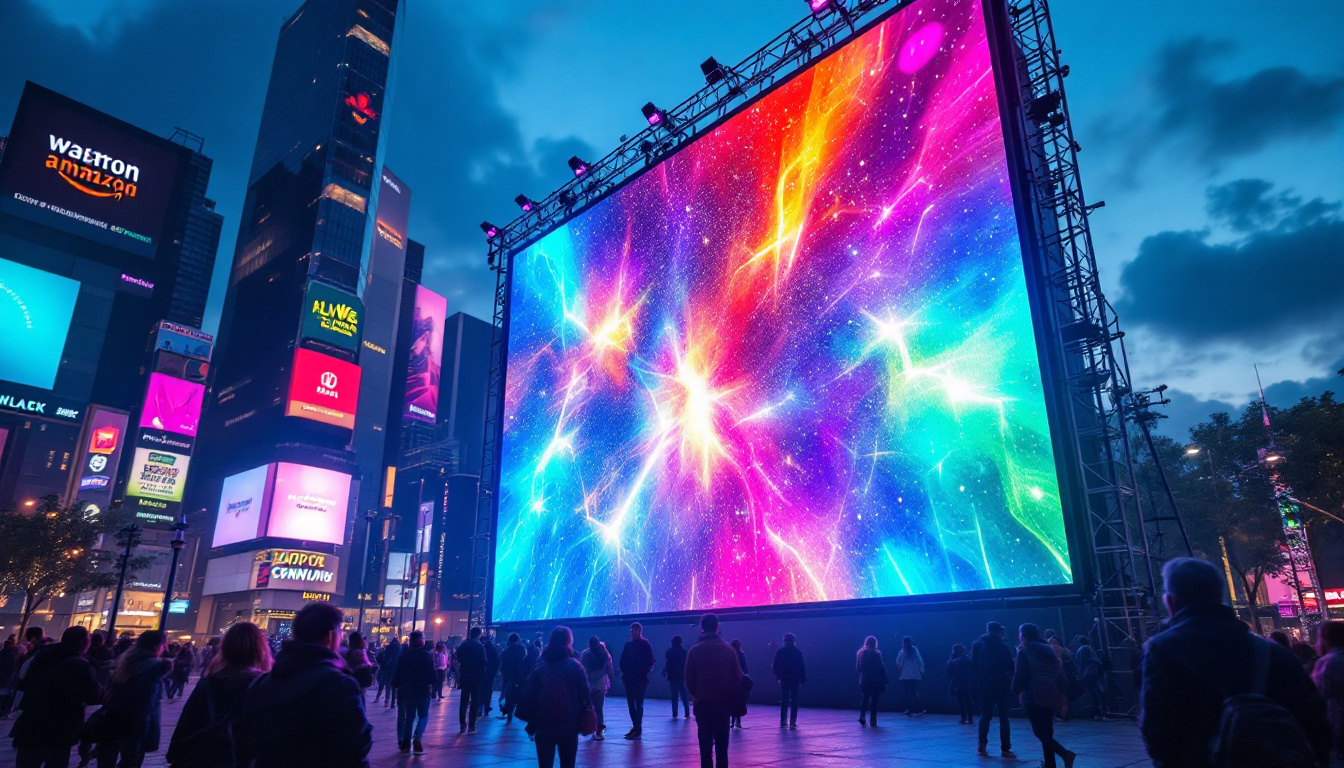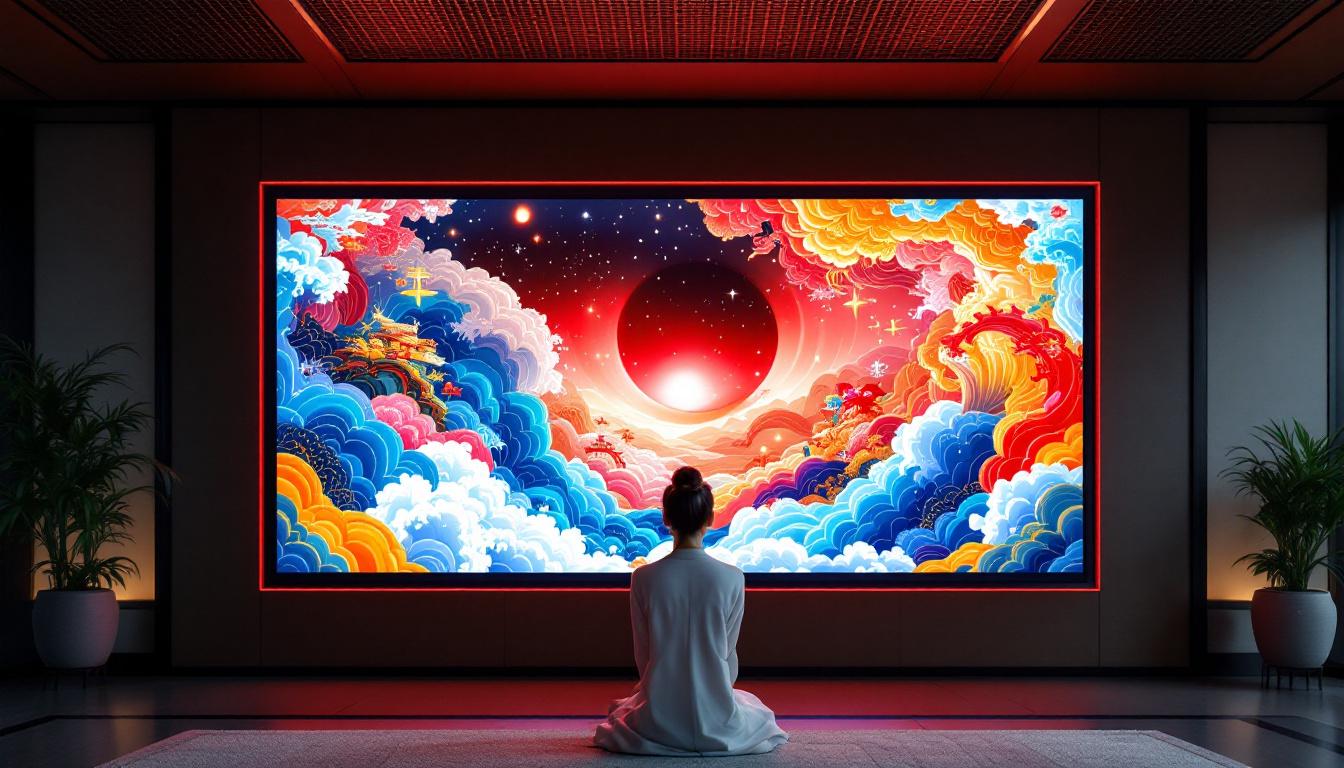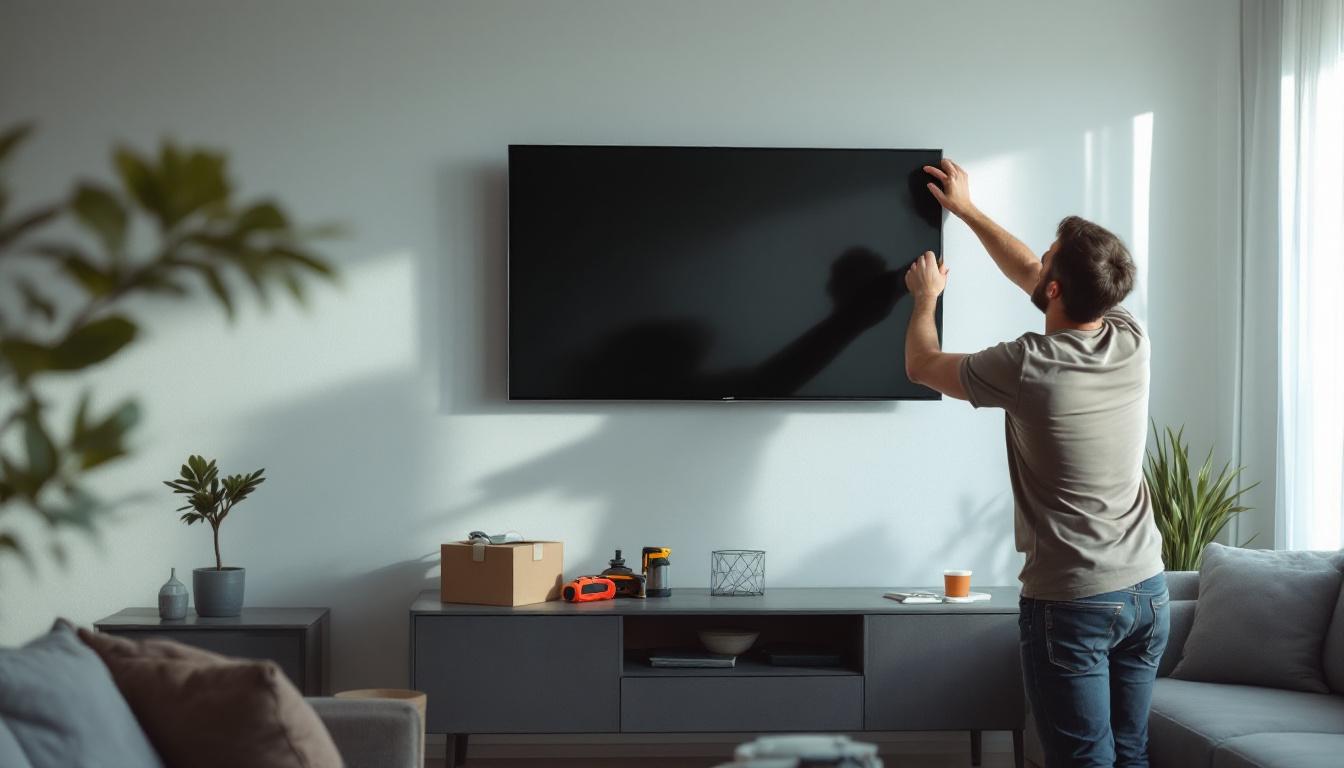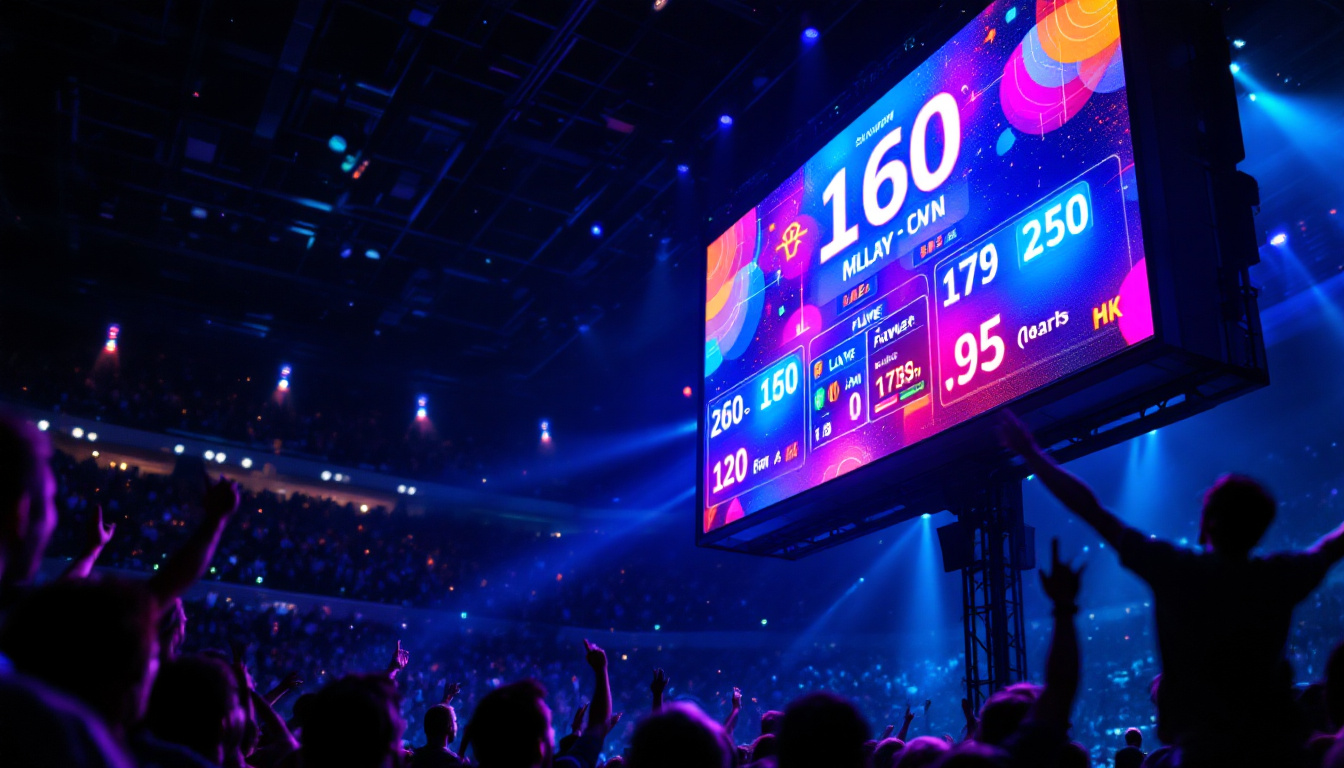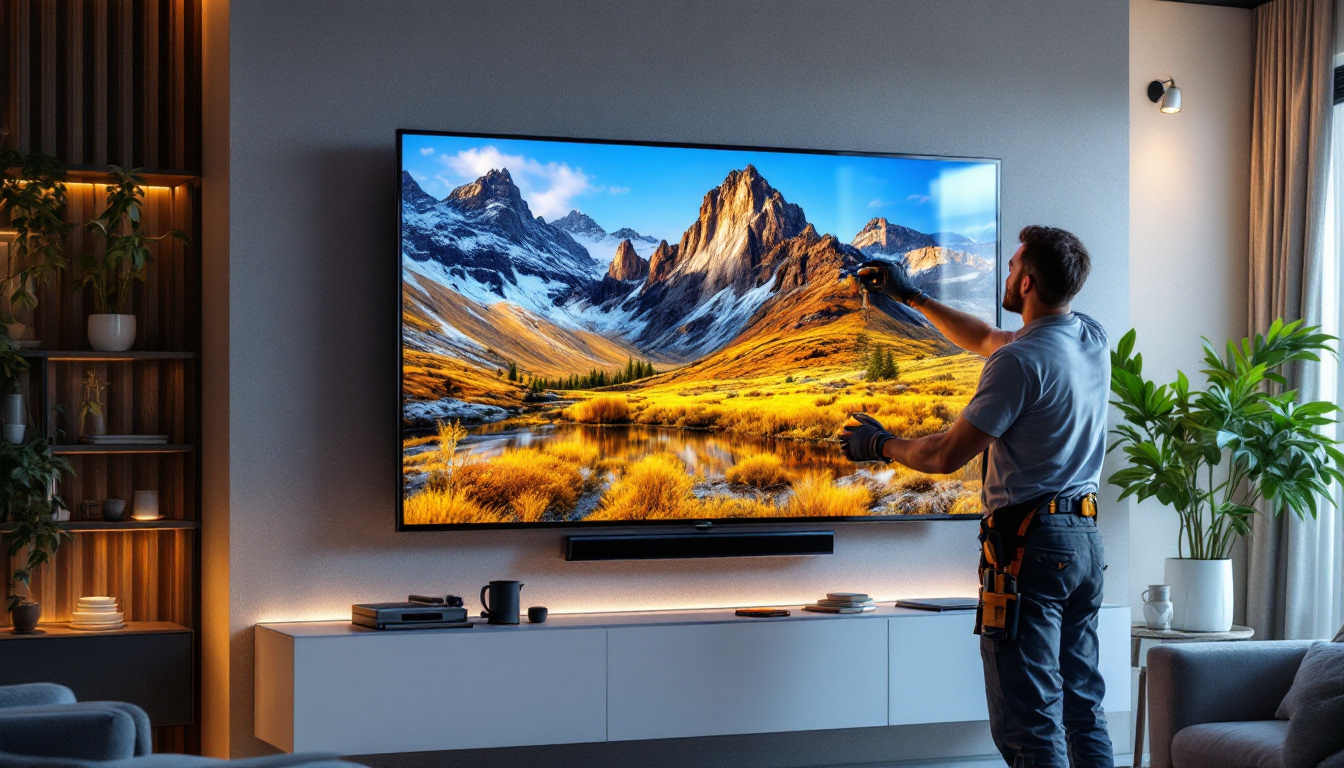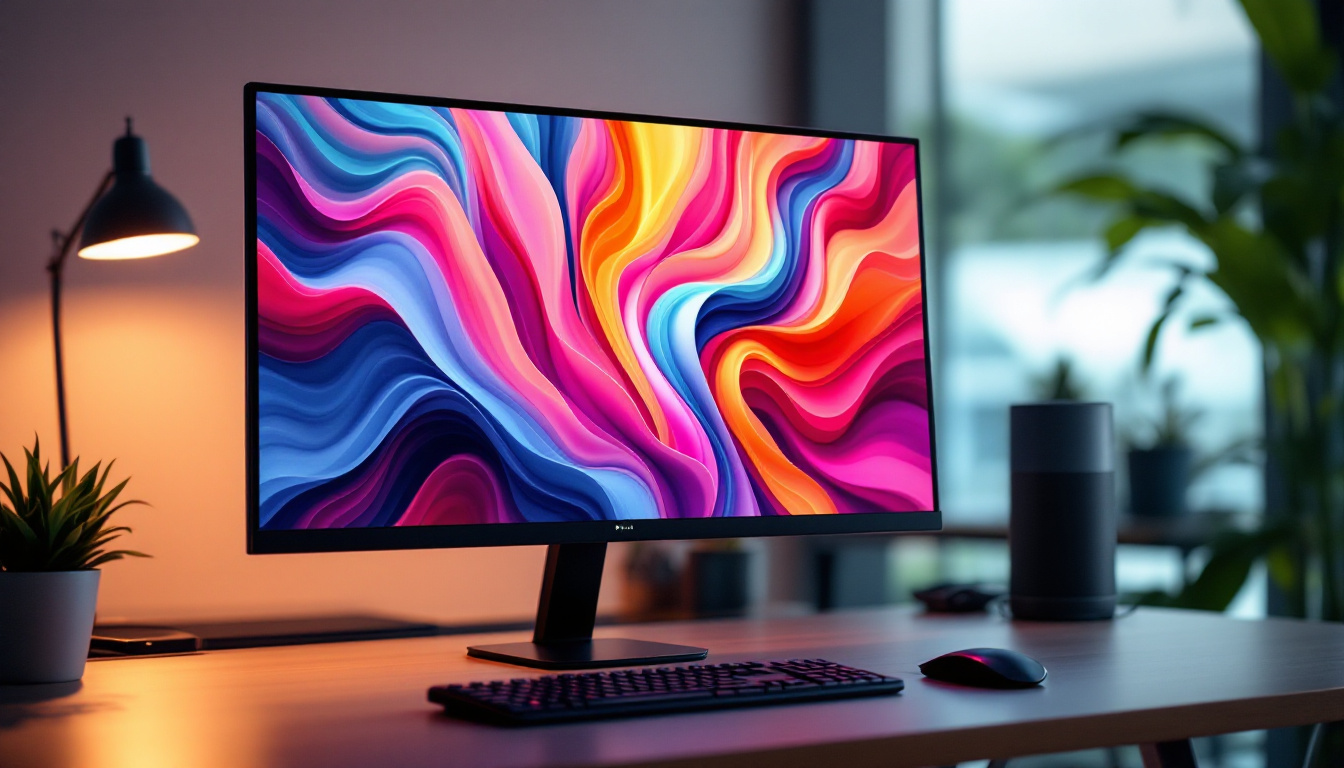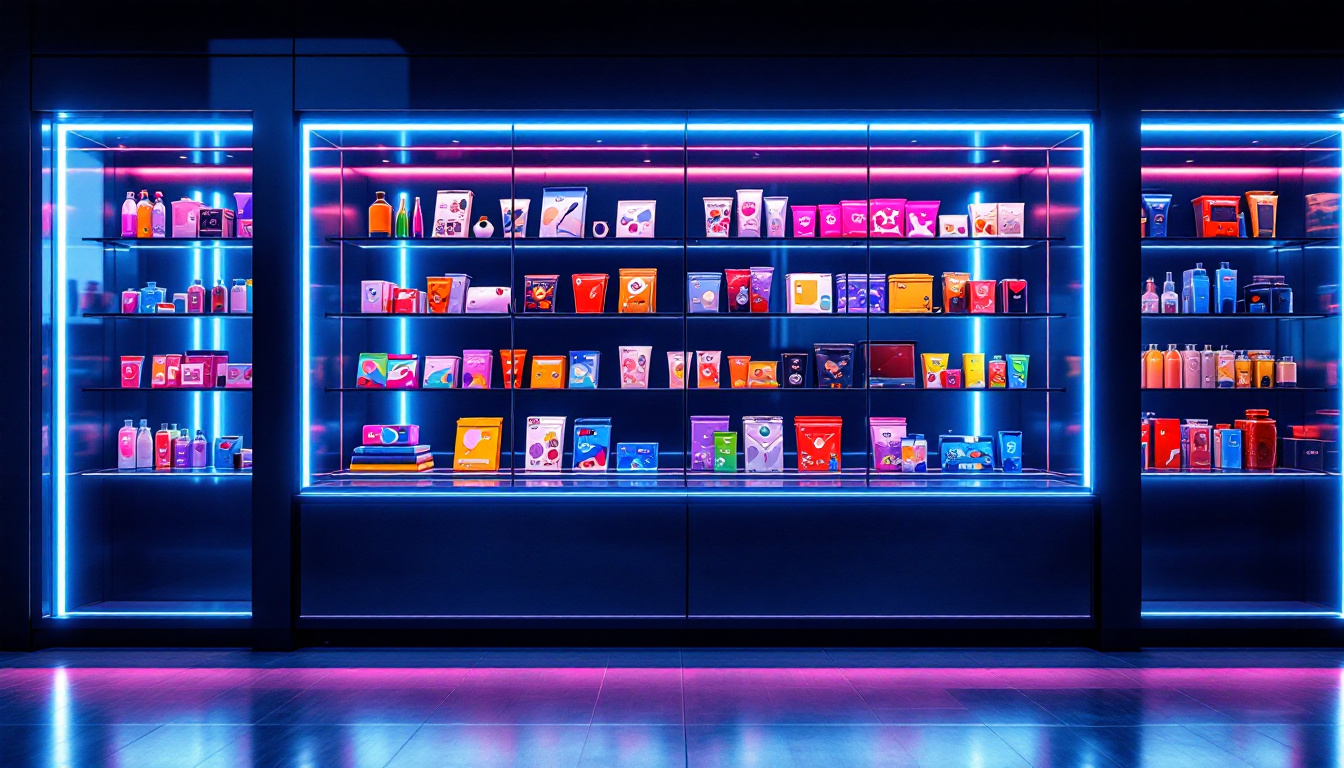Flexible TV Screen: LED Display Explained
In the rapidly evolving world of technology, television screens have undergone a significant transformation. Among the most exciting advancements is the flexible TV screen, which utilizes LED display technology. This article delves into the intricacies of flexible LED displays, exploring their design, functionality, and the future they promise for home entertainment.
Understanding LED Technology
Light Emitting Diode (LED) technology has revolutionized the way images are displayed on screens. Unlike traditional LCD screens that rely on backlighting, LED displays use diodes that emit light when an electric current passes through them. This allows for brighter images, deeper blacks, and a wider color gamut.
How LED Displays Work
At the core of LED technology is the concept of pixels. Each pixel consists of red, green, and blue sub-pixels that combine to create a full spectrum of colors. When these pixels are arranged in a grid, they form the images we see on the screen. The ability to control the brightness of each pixel individually enables LED displays to achieve high contrast ratios, making images appear more vivid and lifelike.
Moreover, LED displays can be categorized into two main types: direct-lit and edge-lit. Direct-lit displays have LEDs placed behind the screen, providing uniform brightness across the entire surface. In contrast, edge-lit displays have LEDs positioned along the edges, allowing for a slimmer profile but sometimes resulting in uneven lighting.
Advantages of LED Displays
LED displays offer numerous advantages over traditional display technologies. They are energy-efficient, consuming less power while delivering superior brightness. Additionally, LED screens have a longer lifespan, reducing the need for frequent replacements. Their lightweight design also makes them easier to mount and transport, contributing to their growing popularity in various applications.
In addition to their energy efficiency and longevity, LED displays are also known for their rapid response times. This characteristic is particularly beneficial in high-speed applications, such as gaming or sports broadcasting, where motion blur can detract from the viewing experience. The quick refresh rates of LED technology ensure that images remain sharp and clear, even during fast-paced action sequences. Furthermore, advancements in LED technology have led to the development of flexible displays, which can be bent or curved to fit unique spaces and enhance the aesthetic appeal of digital signage.
Another noteworthy advantage of LED displays is their environmental impact. Unlike traditional cathode ray tube (CRT) displays, LEDs do not contain harmful substances such as mercury, making them a more eco-friendly option. Additionally, the energy savings associated with LED technology contribute to a reduction in carbon emissions, aligning with global efforts to promote sustainability. As the demand for greener technologies continues to rise, LED displays are positioned to play a pivotal role in the future of visual technology, paving the way for innovations that prioritize both performance and environmental responsibility.
The Rise of Flexible Displays
As technology continues to advance, the demand for flexible displays has surged. Flexible LED screens are designed to bend and conform to various shapes, offering new possibilities for both consumers and manufacturers. This innovation is not merely a trend; it represents a significant leap in display technology.
What Makes Displays Flexible?
Flexible displays are created using organic light-emitting diodes (OLEDs) or other advanced materials that allow them to bend without breaking. Unlike traditional glass screens, which are rigid and prone to shattering, flexible displays can withstand physical stress, making them ideal for a variety of applications. This flexibility opens up opportunities for innovative designs, such as curved screens, rollable displays, and even wearable technology.
Moreover, the development of flexible displays is closely linked to advancements in materials science. Researchers are experimenting with new substrates and encapsulation techniques that enhance durability and performance. For instance, the use of plastic substrates instead of glass not only reduces weight but also improves the resilience of the display against impacts. This ongoing research is crucial for pushing the boundaries of what flexible displays can achieve, paving the way for even more groundbreaking applications in the future.
Applications of Flexible LED Displays
The versatility of flexible LED displays has led to their adoption in numerous fields. In the consumer electronics sector, manufacturers are exploring the potential for curved televisions that enhance the viewing experience by providing a more immersive field of vision. Additionally, flexible displays are being integrated into smartphones and tablets, allowing for larger screens without increasing device size.
Beyond personal electronics, flexible displays are making waves in advertising and marketing. Retailers are utilizing these screens to create dynamic, eye-catching displays that can change shape and size to fit various environments. This adaptability not only attracts customers but also allows for more engaging content delivery. For example, in shopping malls, flexible LED displays can be wrapped around columns or integrated into window displays, transforming static advertising into a vibrant, interactive experience that captures the attention of passersby.
In the automotive industry, flexible displays are also gaining traction, with manufacturers envisioning dashboards that can adapt to the driver’s needs, providing real-time information in a user-friendly manner. Imagine a car interior where the entire dashboard is a seamless display that can morph to show navigation, music, or even personalized messages. This integration of flexible technology not only enhances functionality but also contributes to a sleek, modern aesthetic that appeals to consumers looking for the latest innovations in vehicle design.
Benefits of Flexible TV Screens
Flexible TV screens offer a range of benefits that enhance the viewing experience and provide consumers with more options than ever before. These advantages extend beyond aesthetics, impacting functionality and usability.
Enhanced Viewing Experience
One of the primary benefits of flexible TV screens is the enhanced viewing experience they provide. Curved screens, for instance, can create a more immersive environment by wrapping the image around the viewer’s field of vision. This design minimizes distortion at the edges of the screen, allowing for a more natural viewing experience.
Additionally, flexible screens can be adjusted to different angles, catering to various viewing positions in a room. Whether watching a movie from the couch or presenting a slideshow in a meeting, the ability to adapt the screen’s shape and orientation enhances usability.
Space-Saving Design
Flexible TV screens also contribute to a more efficient use of space. Traditional flat-screen TVs can be bulky and take up significant wall space. In contrast, flexible screens can be rolled up or folded when not in use, allowing for a more streamlined appearance in living areas. This feature is particularly appealing for those living in smaller apartments or homes where space is at a premium.
Challenges in Flexible Display Technology
Despite the numerous advantages of flexible LED displays, several challenges remain in their development and implementation. Addressing these issues is crucial for the widespread adoption of this technology.
Durability Concerns
While flexible displays are designed to withstand bending and twisting, they are not immune to damage. The materials used in their construction can be more susceptible to scratches and wear over time compared to traditional glass screens. Manufacturers are actively working on developing more robust materials that can endure daily use while maintaining flexibility.
Cost of Production
The production of flexible LED displays is currently more expensive than that of traditional screens. This cost stems from the advanced materials and manufacturing processes required to create these innovative displays. As technology advances and production methods improve, it is expected that prices will decrease, making flexible screens more accessible to consumers.
The Future of Flexible TV Screens
The future of flexible TV screens looks promising, with ongoing research and development paving the way for even more advanced technologies. As manufacturers continue to innovate, several trends are likely to shape the landscape of flexible displays in the coming years.
Integration with Smart Technology
As smart technology becomes increasingly prevalent, the integration of flexible displays with smart home systems is anticipated. Imagine a flexible TV screen that can seamlessly connect with other smart devices, allowing for voice control, personalized content recommendations, and even integration with augmented reality applications. This convergence of technology could redefine the way viewers interact with their screens.
Environmental Considerations
With growing awareness of environmental issues, the development of eco-friendly flexible displays is becoming a priority. Manufacturers are exploring sustainable materials and energy-efficient production processes to reduce the ecological footprint of flexible screens. This shift not only caters to consumer demand for greener products but also aligns with global efforts to promote sustainability in technology.
Conclusion
Flexible TV screens represent a significant advancement in display technology, offering a range of benefits that enhance the viewing experience while providing innovative design possibilities. With the integration of LED technology, these screens deliver vibrant images and energy efficiency, making them an attractive option for consumers.
As the industry continues to evolve, addressing challenges related to durability and production costs will be crucial for widespread adoption. However, the future appears bright for flexible displays, with the potential for smart technology integration and sustainable practices paving the way for a new era in home entertainment.
Ultimately, flexible TV screens are not just a passing trend; they are a glimpse into the future of how we consume media and interact with technology. As advancements continue, it will be exciting to see how these displays transform our viewing experiences and redefine the possibilities of screen technology.
Discover the Future of Visual Experience with LumenMatrix
Ready to elevate your visual experience with the latest in flexible LED display technology? LumenMatrix is at the forefront of innovation, offering a wide array of LED display solutions that cater to your every need. From Indoor and Outdoor LED Wall Displays to specialized options like Vehicle, Sports, and Floor LED Displays, LumenMatrix ensures your message stands out with unparalleled clarity and impact. Embrace the future of home entertainment and commercial advertising by exploring our Custom, All-in-One, and Transparent LED Displays. Check out LumenMatrix LED Display Solutions today and join the revolution of captivating, energy-efficient visual communication.

